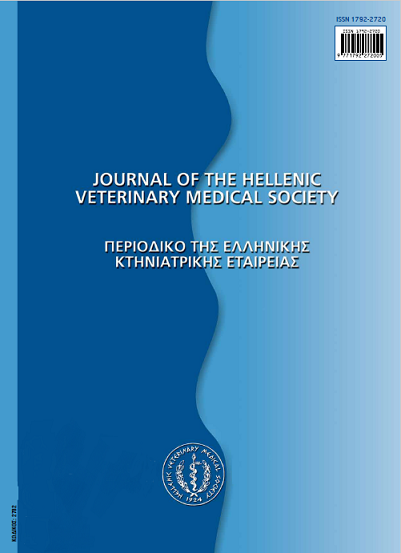Applications of ultrasonography in ruminants (I): A Review.
Résumé
In the middle of 1960s ultrasonography entered the veterinary clinical practice of large animals, almost one decade after the introduction in medicine. First ultrasonography was used to approach problems of the ovine genital system. Overtime, new applications were developed and the use of ultrasonography in large animal medicine was intensified. In the everyday veterinary clinical practice B-mode ultrasonographic devices are mainly used, with simple or convex linear array probes, with a frequency of 3.0 MHz to 7.5 MHz, while sector probes are also used. The adequate knowledge of the anatomy of the region, the appropriate restraint of the animal and a previous good clinical examination are the main prerequisites to conduct an ultrasonographic examination. In ruminants ultrasonographic examination can be applied in mainy systems. In respiratory system ultrasonography is used to evaluate the general condition of the thoracic cavity, with main diagnosticai applications in pulmonary emphysema, bronchopneumonia and aspiration pneumonia. In cardiovascular system ultrasonography contributes efficiently to the examination of the heart and the vessels. Doppler devices offer the opportunity of better estimation of some blood parameters. In the last two decades the use of ultrasonography has been propagated widely to approach problems associated to the digestive system of the ruminants and to evaluate the general condition of their peritoneal cavity. Ultrasonography is a very useful diagnostic tool to evaluate traumatic reticuloperitonitis and distension of the cecum. In cattle ultrasonographic examination of some organs, such as liver, spleen and pancreas, offers an opportunity to estimate changes in their size, contour and their position in the abdomen comparatively to their adjacent organs. Changes in the normal echotexture image are in most cases a sign of pathological conditions. Ultrasonography is useful in calves for the estimation of the condition of their umbilicus. At their first week of life, contributes to confront better some conditions such as omphalophlebitis, omphaloarteritis and omphalolourachitis. In the ruminants' urinarysystem ultrasonography is used to approach cases of urolithiasis along to the deferent section, cases with rupture of the urinary tract or cases with the presence of a mass. Application of ultrasonography in the bovine's musculoskeletal system, which has been researched thoroughly at the last two decades, offers an opportunity to image in a better way the joints which are covered by huge muscles. The anatomical and tissue function can be estimated in real time and the general condition of the animal can be evaluated. New advantages of ultrasonography are being researched, with main purpose the use of this technology as much as possible. Ultrasonography is a very effective imaging means in the service of the clinical veterinarian, which offers him the opportunity to examine in real time the area he desires in ruminants, but it doesn't replace the clinical examination.
Article Details
- Comment citer
-
LAZARIDIS, L., & KIOSSIS, E. (2018). Applications of ultrasonography in ruminants (I): A Review. Journal of the Hellenic Veterinary Medical Society, 61(4), 339–350. https://doi.org/10.12681/jhvms.14907
- Numéro
- Vol. 61 No 4 (2010)
- Rubrique
- Review Articles

Ce travail est disponible sous licence Creative Commons Attribution - Pas d’Utilisation Commerciale 4.0 International.
Authors who publish with this journal agree to the following terms:
· Authors retain copyright and grant the journal right of first publication with the work simultaneously licensed under a Creative Commons Attribution Non-Commercial License that allows others to share the work with an acknowledgement of the work's authorship and initial publication in this journal.
· Authors are able to enter into separate, additional contractual arrangements for the non-exclusive distribution of the journal's published version of the work (e.g. post it to an institutional repository or publish it in a book), with an acknowledgement of its initial publication in this journal.
· Authors are permitted and encouraged to post their work online (preferably in institutional repositories or on their website) prior to and during the submission process, as it can lead to productive exchanges, as well as earlier and greater citation of published work.



